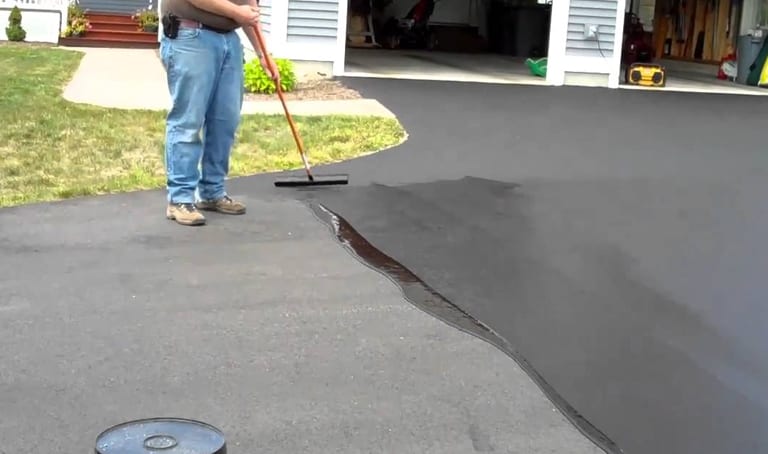Warm Mix Asphalt: A Sustainable Service for Sidewalk
Warm Mix Asphalt (HMA) has become a leading lasting choice for pavement options, providing a myriad of environmental benefits and cutting-edge technologies. Its capability to lower and reuse materials energy consumption provides an engaging instance for its fostering in road construction jobs. Moreover, the lasting efficiency and toughness of HMA make it a recommended alternative for framework development. As the need for environment-friendly building and construction methods expands, discovering the subtleties of HMA's sustainability can supply important understandings into the future of pavement options.
Ecological Benefits of Warm Mix Asphalt

Furthermore, Warm Mix Asphalt helps to alleviate urban warm island results. Its dark color soaks up sunlight, minimizing the quantity of heat reflected back right into the ambience contrasted to lighter-colored sidewalks. This can reduce ambient temperature levels in urban areas, lowering the demand for air conditioning and eventually reducing power consumption.
In enhancement, Warm Mix Asphalt adds to boosted stormwater monitoring. Its porous nature allows water to penetrate the sidewalk and reenergize groundwater products, lowering runoff and the risk of flooding. These environmental benefits make Hot Mix Asphalt a sustainable option for paving roadways and freeways.
Power Efficiency in HMA Manufacturing
Is energy efficiency a critical element in the production of Warm Mix Asphalt (HMA)? Definitely. Power plays a significant function in the production of HMA, impacting both expense and environmental sustainability. One key element of energy efficiency in HMA manufacturing is the use of warm mix asphalt (WMA) innovations (regrading). WMA permits the mixing and positioning of asphalt at reduced temperatures compared to traditional warm mix asphalt, causing reduced power usage during manufacturing. This procedure not just decreases fuel use however additionally reduces greenhouse gas emissions, making it a more eco-friendly alternative.
Additionally, advancements in plant innovations have actually led to more energy-efficient HMA manufacturing procedures. Modern plants are developed with functions like recycled asphalt sidewalk (RAP) handling capacities, effective burner systems, and enhanced insulation, all adding to energy financial savings. By enhancing power usage in HMA production, the market can lower its carbon footprint while keeping premium sidewalk materials. Power performance is, as a result, an essential factor to consider in ensuring the sustainability of Hot Mix Asphalt production.
Recyclability of Warm Mix Asphalt
The recyclability of Hot Mix Asphalt (HMA) is an essential aspect of its sustainability and long-lasting environmental influence. HMA is one of one of the most recycled products in the USA, with over 100 million lots of reclaimed asphalt sidewalk (RAP) being reused yearly in new pavement construction. Recycling HMA uses numerous ecological benefits, such as reducing the need for virgin products, decreasing power usage throughout manufacturing, and reducing the amount of waste sent out to land fills.
The procedure of recycling HMA entails crushing the existing sidewalk, squashing it right into smaller sized items, and blending it with brand-new aggregate and asphalt binder to produce a recycled mix. This recycled mix can commonly do along with or also much find more info better than conventional HMA, while needing less resources and creating lower greenhouse gas emissions. By including RAP into new pavement projects, road firms can preserve all-natural sources, decrease prices, and reduce the environmental impact of road construction and upkeep tasks. Overall, the recyclability of HMA plays a considerable duty in advertising sustainable methods within the pavement industry.

Long-Term Efficiency of HMA
Asphalt pavements show sturdiness and durability over a prolonged period, mirroring the lasting performance of Warm Mix Asphalt (HMA) Furthermore, advancements in HMA innovation, such as the use of polymer-modified binders and cozy mix asphalt, have better boosted the longevity and durability of HMA sidewalks. By focusing on quality building and upkeep techniques, HMA proceeds to verify itself as a cost-efficient and lasting remedy for long-lasting sidewalk facilities.

HMA: Durability and Sustainability
Demonstrating both durability and sustainability, Warm Mix Asphalt (HMA) has actually come to be a keystone in the construction of long-lasting pavement infrastructures - angled parking. HMA's toughness comes from its capacity to endure heavy loads, severe weather, and high web traffic quantities, making it a reliable selection for roadways, highways, and flight terminal website here paths. The make-up of HMA, which commonly includes accumulations, binder, and filler, plays a critical function in boosting its durability and resistance to damage
Furthermore, HMA's sustainability hinges on its recyclability and energy-efficient manufacturing procedure. The ability to reuse redeemed asphalt pavement (RAP) in brand-new HMA blends minimizes the demand you can try here for virgin products and decreases the environmental effect of pavement building and upkeep. In addition, the power effectiveness of creating HMA exists in its lower mixing temperatures compared to various other sidewalk materials, resulting in reduced power usage and greenhouse gas exhausts.
Conclusion
In conclusion, hot mix asphalt (HMA) provides a lasting option for sidewalk with its ecologically pleasant characteristics. HMA's recyclability, power effectiveness in manufacturing, and long-lasting longevity make it a green option for roadway construction.
HMA is one of the most recycled products in the United States, with over 100 million lots of reclaimed asphalt sidewalk (RAP) being recycled annually in new pavement building.The process of recycling HMA entails milling the existing sidewalk, crushing it into smaller sized pieces, and blending it with new aggregate and asphalt binder to create a recycled mix.Asphalt pavements show durability and durability over a prolonged duration, reflecting the lasting efficiency of Hot Mix Asphalt (HMA) In addition, advancements in HMA modern technology, such as the usage of polymer-modified binders and warm mix asphalt, have further improved the resilience and long life of HMA sidewalks. The ability to recycle redeemed asphalt pavement (RAP) in new HMA combinations lowers the demand for virgin materials and decreases the environmental impact of pavement construction and maintenance.